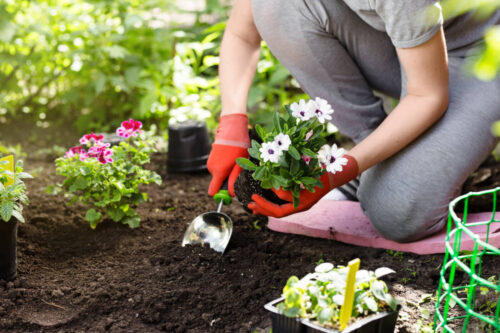Home Gardening Tips: How to Start Your Own Garden

If you’re looking for a way to better your physical and mental health this year, the solution might be even closer to home than you initially realized. Starting a garden has been shown to be just as helpful to your overall health as going to the gym.
That’s before we even get into the benefits of healthier eating, and the satisfaction you’ll gain from growing and eating your own food. If you’ve ever thought of starting a garden home, these are all signs that this is your moment.
Still nervous? All you might need are some home gardening tips to get you started on the right path. Read on and we’ll walk you through some easy home gardening tips that will have your thumb turned green in no time.
Start With A Broad Plan
It’s great to decide that you want to start gardening, but there are still more decisions you’ll need to make before getting started. The major one? The kind of garden you want to have in your yard.
Do you want a flower garden or a vegetable garden? Do you want to grow herbs or fruits? The decision is yours at the end of the day, but the type of garden you want to grow will lead to a number of other decisions you make as you put your garden together.
Each garden variety will require different amounts of labor, care, and skill. Take the decision seriously, as you won’t be able to go back quickly once you’ve started the process. While it might be tempting to mix and match, it can be easier for the novice gardener to start in one area first and expand later.
It’s best to start small and get a true sense of control over your garden before expanding it. Taking on too much too soon can prove overwhelming, and it might drive you away from gardening before you even get the hang of it.
Choosing a Garden Location
The next step will be choosing a location around your home in which to situate your new garden. No matter what type of garden you decide to create, you’re going to require a lot of sunlight. You’ll want to scope out a spot in your yard that’s available and gets at least six or more hours of direct sun each day.
If you’ve had the benefit of creating a custom home, you may have even left an area in your yard open specifically for a garden. You’ve planned ahead, and now it’s time to reap the rewards.
If your yard tends to be on the shadier side, you won’t have to despair. Some gardening options might not work for your yard, but there are still plenty you should be able to grow. Do some research or talk to a specialist at your garden center and determine what plants might be best for your yard.
In addition to sunlight, you’ll also need to think of the topography. Picking a relatively flat spot will be ideal. While it’s possible to craft a garden on a sloped service, it can be more difficult and time-consuming.
Better to save yourself that kind of trouble if you can.
Last but not least, make sure you have easy enough access to water nearby. It’s going to get annoying if you position your garden as far away as possible from the hose, and might create more of a burden than you need.
Clearing the Ground & Planting
Now that you’ve made all your big decisions, you can actually get into the business of crafting your garden. First, you’ll want to get rid of weeds and sod that exist where your garden is going to be. Go ahead and cut the sod out and get rid of it, leaving a patch of soil in its place.
You may want to add some organic matter or compost to your new soil patch, as the nutritional value of residential soil is often less than what plants would prefer.
Prepare your plant beds by loosening the soil up with a hoe. It’s easier for the plants to grow when the soil has been prepared for them.
Collect all the plants that you’re planning to plant. Make sure you’re making choices based on the current season. Some plants, such as kale, can tolerate the cold, so you can plant them in the winter.
However, most plants aren’t going to be able to make it through cold temperatures, so you’ll need to plan ahead to get things going in the spring and summer. Gardening at home is all about watching the seasons.
Be sure to read the details on the label of each plant that your purchase. Each plant may have slightly different specifications when it comes to planting time, depth, and spacing. Make sure to follow the instructions or you might run into trouble later on.
If you’re nervous about starting from seeds, you can take an easier approach by investing in plant transplants. These are young plants that someone has started growing somewhere else. All you need to do is plant them into your own soil and encourage them to keep growing.
Essential Home Gardening Tips
If you’re looking to craft a garden at your residence, you’ll want to get familiar with the above home gardening tips. Approaching your garden project in the right way will ensure success and many bountiful harvests in the years to come.
Need more assistance in crafting your ideal house and environment? Give us a call anytime to start building your dream home today.
